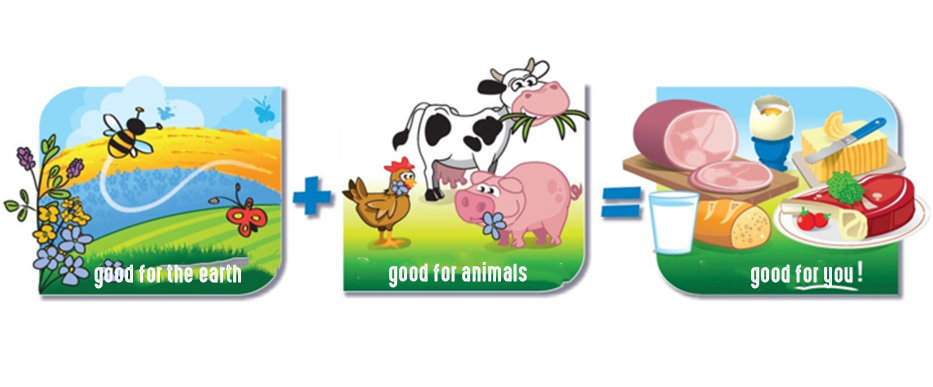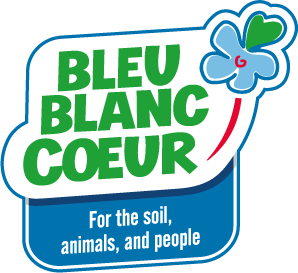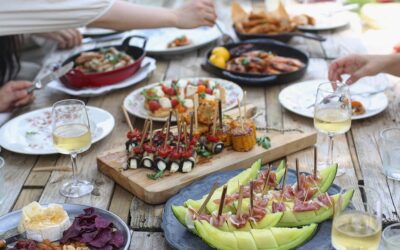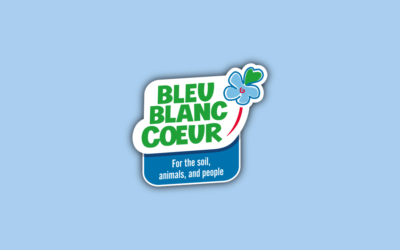Nathalie KERHOAS, Director of Bleu-Blanc-Cœur , talks about the fact that the consumer is now more and more attentive to the quality of its food. The latter increasingly understands the obvious link (and yet, for a very long time demonstrated) between what he is eating and his future health.
Nutrition and Health come back as important topic , leading to these questions: who and what tool can you trust?
What place for Nutriscore in all of this?
An article to read :
This is the reflection of Nathalie Kerhoas :

» When consumers want to bring back together food and health:
who and what tool can they trust? «
Nathalie Kerhoas
- The market’s response: an anxiety marketing ?
Consumers are now facing a plethora of new promises on supermarket shelves: GMO-free, Gluten free, Antibiotics free, Sugar free, Without salt, Without Preservative, without endocrine disruptors, without pesticide residue, No animal protein…
This constantly growing offer is a market response to the justified fears of people for their health and for the sustainability of our planet, the integrity of which is now threatened.
Currently, we are becoming more and more aware of these drifts and overflows:
• On the one hand, the public health expenditure to treat diseases of civilization (overweight, obesity, cancer, cardiovascular disease, etc…) are exploding. It is a matter of billions of euros per year for countries
• On the other hand, we are facing global warming. This is no longer a topic that can be ignored. The goal of keeping global warming at + 2°C is a major global issue.
We can, no longer ignore the subject of climate migrants. In 2050, between 100 and 250 million people should move toward so-called stable temperate zones to flee the consequences of these climate changes!
The eater is not a consumer like the others, says Claude FISCHLER (Sociologist, specialized in food). The eater incorporates with the food all the anxieties and fears associated with this food: from the stress that the animal may have had during its life to any contaminants that may have affected the safety of the food.
We can, therefore regret that the market offers a marketing solution centered on people anxieties and prefers to value the « without certain substance » than value a more holistic and positive promise « with more ».
2. The Public response with solution such theNutriscore – a logo to choose the right products.
Born in France by French Health ministry and nowdays spreading across Europe, the logo Nutriscore has been created to help consumers make a healthy choice when shopping for food.
This “NUTRISCORE” logo is a guide for comparing the nutritional quality of products according to their category (cookies, dairy products, ready meals, pizzas, etc…), within the same category (breakfast cereals, drinks, etc.) and between two different brands (mueslis, frozen cheese pizzas, etc…).
It’s based on nutritional benchmarks, that are both simple and obvious and have proven and demonstrated health impacts (energy, salt, sugar and fat content, etc…). A green nutriscore or with a letter A is considered virtuous for health; whereas a red nutriscore or with an “E” letter is considered unhealthy.
It’s a formidable tool for comparing several products of the same category among themselves and especially formidable when the degree of elaboration of the product is high (breakfast cereals, processed meals, etc.).
It’s an aid to the purchase but it is not because you compose menus with 100% of products rated « A » (therefore very well rated for health) that your diet will be perfect for your health … The general recommended daily allowance recommend limiting certain nutrients but excluding them is not good either. Nutrition is a wise balance and food combination
Nutriscore is therefore a very relevant tool, essential for discriminating and comparing products with one another. But, be careful not to attribute functions to Nutriscore that go beyond what it was created for.
Two examples:
– All the fat (butter, oil, cheese, etc.) is necessarily class “D” or even “E” or red on the Nutriscore. And yet, we know the benefits of dairy fats and the very recent rehabilitation of « good fat » instead of « bad sugar » (we go from crisis to crisis by bad information and a total lack of weighting on nutritional messages … Pity)
– The nutriscore doesn’t have to be a holy grail to reach either. I have, in mind the request of a producer of Bleu-Blanc-Cœur milk who wanted a derogation from the Bleu-Blanc-Cœur specifications to make a significant contribution to fatty rapeseed cake in the diet of his cows because the rapeseed has the effect of lowering saturated fat in milk. By setting up this feeding practice, our breeder was going to gain a class in Nutriscore … but what is less known is that rapeseed in large quantities is not a raw material suitable for ruminants and that the risk is to produce milk loaded with trans 10 fatty acids which are harmful to the health of the cow and then of the consumer of the dairy products thus produced.
3. The common sense answer
This ideal answer would be:
– the NUTRISCORE to help the consumer to sort out foods and specially to see clearly in the labels of processed products.
– An identification of foods resulting from agriculture with a health benefit (or high nutritional value) which would make it possible to promote breeders committed in virtuous production methods for health (and for the environment).
So, we would put on diet the cow, hens and pigs to provide nutritional density on the plate.

The consumer would then use the Nutriscore to decide the quantity, the brand and the product that he would put on his plate! This solution is both simple and obvious and has fully demonstrated its scientific relevance !!!
Let’s go!






 Home
Home

